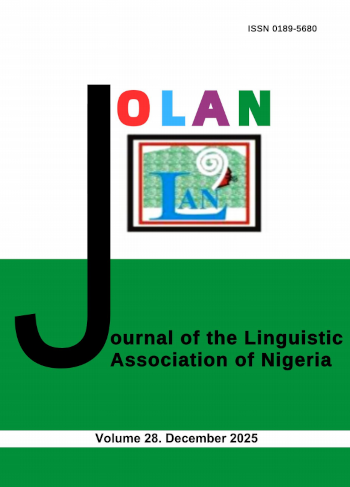User-Generated Stickers: Social Media for Language Revitalization and Maintenance in Africa
Keywords:
Computer-Mediated Communication, Social media, User-generated stickers, Company-generated stickers,, Language revitalizationAbstract
Studies in computer-mediated communication have shown how its different innovations have aided languages to find space which may assist in their revitalization. The use of user-generated stickers is one of such innovations, and it has just emerged on social media as a virtual space. Therefore, this paper examines user-generated stickers with a view to revealing how they revitalize African languages by giving opportunities to African users to express a variety of ideas in any of the continents’ indigenous languages. Generally, a sticker is a blend of sized picture and text. The paper however finds that company-generated stickers, which are also found on social media, are rigid, defined and do not allow individual creativity and cultural inclusion. User-generated stickers, on the other hand, are not rigid, as a picture could be accompanied by a text in any language or by any other feature from any culture. This paper therefore sees user-generated stickers as constituting a tool with the flexibility of which could be leveraged on for language revitalization, maintenance as well as cultural preservation in the present-day Africa. It also investigates the degree of usage and the attitude of users to this tool. The analyses are couched on the tenets of Meme theory. WhatsApp chats, observations and direct interviews were used as data sources. The analyses reveal that although user-generated stickers encounter both positive and negative predispositions from users, they considerably influence the revitalization of African languages.
References
Abdulmohsin A. (2016). Language Revival; Significance, Strategies, Methods and Issues. European Journal of English Language and Literature Studies, volume 4, issues 6 pp.53-65, September 2016
Benrabah, M. (2004). Language and politics in Algeria. Nationalism and Ethnic politics, 10(1), pp. 59-78.
Blackmoore, S. (1999). The Meme Machine. Oxford University Press Great Clarendon street, Oxford OX2 6DP. ISBN-13:978-0-19-286212-9
Business insider by Pulse. Retrieved April 9, 2020, from https://www.pulse.ng/bi/tech/how-nigerians-are-using-the-internet-in-2019/kz097rg.
Crystal, D. (2000). Language Death. Article in Applied Psycholinguistics June 2001. Cambridge University Press, 2000
Dawkins, R. (1976). The Selfish Gene. Oxford University Press. First edition (1976)
Dawkins, R. (1989). The Selfish Gene. Oxford University Press. Second edition (1989)
Eberhard, David M.,Gary F. Simons, and Charles D. Fennig (eds.). 2020. Ethnologue: Languages of the World. Twenty-third edition. Dallas, Texas: SIL International. Online version: http://www.ethnologue.com.
Simpson, J. (2002). Computer-Mediated Communication. ELT-Journal volume 8614: October 2002 © Oxford University Press
Wilhelm, A. (2013). Language Revitalisation. Annotated bibliography for Oxford Bibliographies Online, Oxford University Press. Pre-publication version
World Population review 2020. Retrieved April 9, 2020 from https://worldpopulationreview.com














